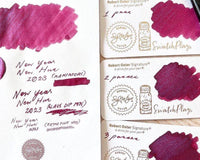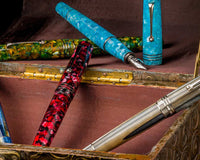Stationery geeks often find themselves dabbling in a bit of artistry the more they become invested in their hobby. What starts out as a modest selection of washi tape can turn into a vast collection of pens, papers, and watercolor paints. When it comes to one stationery item, there’s more than meets the eye. Enter dual brush pens, which combine a unique brush tip and water-based ink into one tool. They are incredibly versatile and can spark creativity in many ways. But what exactly can you do with a set of brush pens? We’re here to answer just that.
What is a dual brush pen?

Dual brush pens are simply markers that have a brush tip on one end and a fine tip on the other. Think of it as something similar to a paintbrush attached to the tip of a marker. The flexible brush tip can create both thin and thick lines, adding line variation to your artwork.
Dual brush pens need to be maintained, so using high-quality paper is a must. If used carelessly, it can be easy to fray and ruin the brush tip of your dual brush pen. Tombow, Arteza, Pentel, and Sailor are some reliable dual brush pen brands available on the market.
What to do with dual brush pens

Dual brush pens have many creative uses that make them excellent additions to your stationery collection. Here are just a few ways that you can use dual brush pens.
Monoline Lettering
The smaller bullet tip on your dual brush pen can be used much like a traditional marker. It will not respond to changes in pressure, so the line thickness will be consistent as you use it. This end can be used to do monoline lettering in many kinds of styles.
Brush Lettering
The other end of the dual brush pen can help you create beautiful brush-style script. You can achieve line variation by applying and releasing pressure as you write. This will create a thicker downstroke and a narrower cross stroke so that you get the stylized hand-lettering look that we all know and love. This is also sometimes referred to as faux calligraphy.
Coloring
Dual brush pens are also great for coloring in illustrations. Using the brush tip end, you can mimic the size and action of a paintbrush, making coloring much more fun and efficient than using a traditional marker.
Watercoloring
Since dual brush pens use water-based ink, they can also act like watercolors without the need for any paint. Using either end of your dual brush pen and a non-absorbent surface (like hard plastic or glass), scribble until ink pools up into little puddles. You can then use a wet paintbrush to pick up the ink and paint with it. Alternatively, you can use your dual brush pen directly on the paper and blend out the color using a wet paintbrush.
Blending
Blending colors is easy with dual brush pens. The water-based ink makes smooth gradients possible, allowing you to create lettering or illustrations with seamless color transitions.
The Bottom Line
Dual brush pens are fun and easy to use with many artistic applications. Whether you’re trying your hand at colorful calligraphy or want to create outlines for your illustrations, it’s always worth having a dual brush pen set on hand.
Written by EndlessPens Blogger Ramona Kabigting







